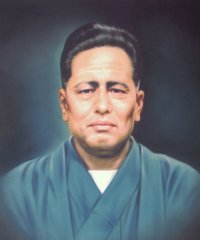
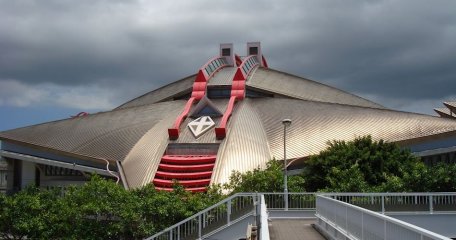
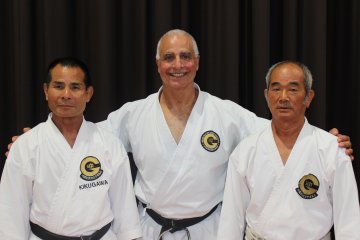
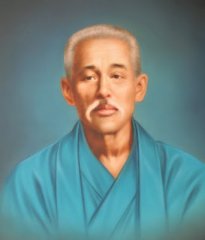
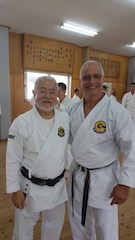
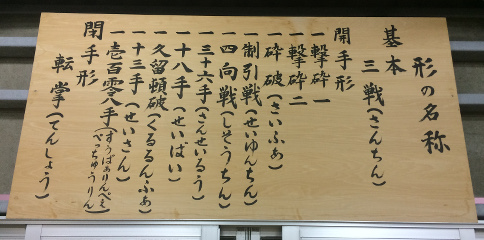
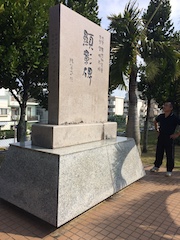
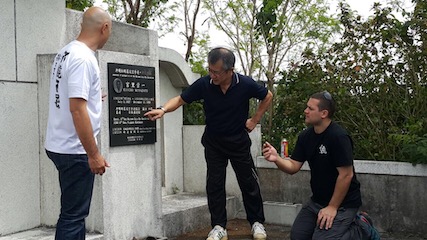
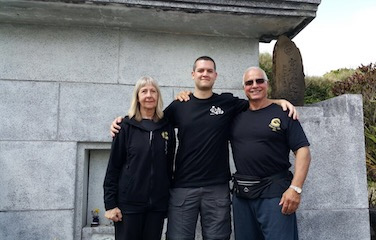
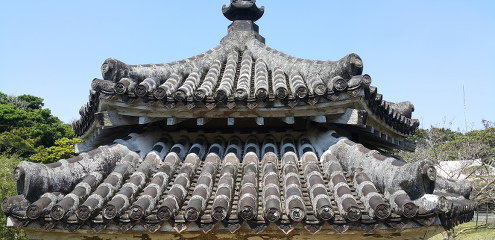
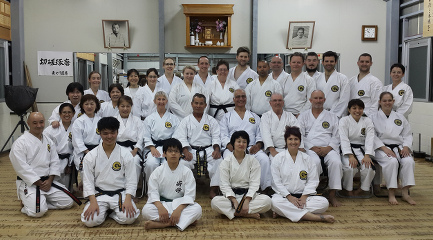

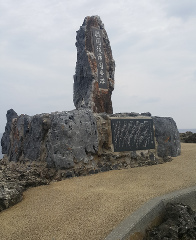


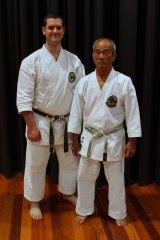
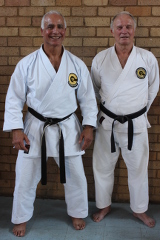
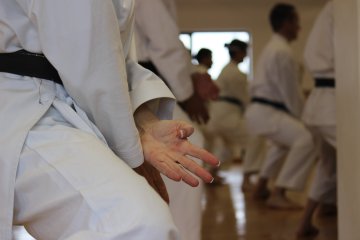




















You Are Here: About » Goju-RyuGoju-Ryu (Hard and Soft System):Goju-Ryu Karatedo is one of the last remaining styles that has its claim on "traditional karate". We have a lineage going back to the Grand Masters or "founders" of karate. Instructors in traditional martial arts teach their art as it was taught from the beginning, including all of the various methods of blocking, kicking and striking. This variety and the broad and comprehensive approach to fighting makes traditional martial arts a more practical method of self defence, as opposed to a condensed "The Best Of ..." type of style that focuses on point scoring and flashy moves especially seen in tournament karate.
 Classical or Traditional means the art has not been diluted or embellished through the generations like many other martial arts have. Instead, Traditional Okinawan Karate persists as a highly effective fighting system today. It is not a sport style of Karate but offers its students a practical method of self defence in any situation. Some instructors of sports- and tournament oriented styles omit in their teaching anything that does not score points, and are known to change the Kata (pre-arranged forms) to look better for tournaments thus changing the essence it was originally intended to have. In our classes you will never hear the words "Point Scoring Technique", or "this looks better...do it that way". Instead we focus on preserving the original art as a complete system of self defence. The martial art as a fighting art, these days mostly used for personal self defence, is studied and practiced without the sports or competition aspect. You are learning it to better yourself and your own skills, not to be recognized for your superior skills compared to somebody else. And then there is always the great fact in life, those who have trained karate and have omitted or changed the ways the masters have intended the moves to be practiced, have paid the price dearly with injuries from incorrect movements. Traditional Goju-Ryu instructors always focus on the correct techniques and how they should be applied unlike our sport counter-parts. What does the name mean?Functionally translated, Goju-Ryu Karate means Hard (Go) and Soft (Ju) Open/Vastness hand system (ryu). The Goju-Ryu style was created from the life-long work of two great Okinawan karate teachers, Kanryo Higaonna (1853-1917) and his student Chojun Miyagi (1888-1953). Since the style was developed in Okinawa and China, it reflects a blend of techniques ranging from powerful and explosive punches, kicks, and joint locking, to more subtle and gentle blocking and evading techniques. The Naming of Goju-RyuIn 1930 Jin'an Shinzato senior disciple of Grandmaster Chojun Miyagi gave a demonstration of Kata at the All Nippon Budo Championship which was held to celebrate the commemoration of Emperor Hirohito. After the tournament a martial artist from Japan asked Shinzato Sensei which Ryu, "style" of karate he represented. Baffled, Shinzato Sensei was unable to give the Japanese martial artist an answer. At that time the Ryukyu Di (Okinawa hand) arts didn't have a name for each style they were only known by their geographical reference.Upon returning to Okinawa, Shinzato related to Grandmaster Chojun Miyagi the incident. Chojun Miyagi thought about this dilemma for a while. He then decided to give his style a name in order to promote and compete with other schools of Japanese martial arts. Grandmaster Chojun Miyagi named his art "Goju" meaning "Hard and Soft" after a poem of the eight principles of Chinese Kempo which came from the ancient White Crane text the "Bubishi" (Wu Bei Zhi in Chinese). Chojun Miyagi named his method of "te" from the third line of this poem ("Ho Goju Donto "- The way of inhaling and exhaling is hardness and softness). Chojun Miyagi was the first amongst his peers not to name a system by the area in which it was practiced, such as Shuri-te, Tomari-te and Naha-te. In 1933 Chojun Miyagi formally registered his art "Goju-Ryu" at the Dai Nippon Butokukai, a prestigious Japanese martial arts Association. To the left of this article you will find the three characters as it is written in Kanji (from top to bottom - go ju ryu).
|